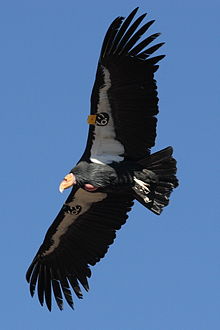Sierra de San Pedro Martir National Park is rugged, heavily forested, mountainous terrain in the northwestern part of Baja California, Mexico. It is a protected habitat for bighorn sheep and Mexico's only home for the critically endangered California condor.
The 72,909 hectare park is home for the six telescopes of the National Astronomical Observatory.
Understand
[edit]
History
[edit]Before the Spanish conquered Mexico, this part of Baja was occupied by the Kiliwa people.
Jesuit missionaries explored this area of northern Baja in the early 18th century, followed by Dominicans who built the Misión de San Pedro Mártir de Verona in the southern part of the park.
The park was created in 1947 by decree from President Miguel Aleman.
Landscape
[edit]
The park is mountainous with granite slopes and dense pine forest. Dramatic cliffs, canyons, and outcroppings create a beautiful mountain landscape. Picacho del Diablo, on the east side of the park, is the highest peak at 3,096 meters.
Flora and fauna
[edit]|
California Condors
The condor is the largest bird of prey in North America with a wingspan nearly 10 feet long. By the 1970s, this magnificent flier was nearly extinct in the United States due to the chemical DDT as well as habitat loss and hunting. It had already disappeared from Mexico, with the last sighting in Baja in 1937. Thanks to efforts by the U.S. Fish and Wildlife Service and conservation groups, an emergency effort to save the last few birds was successful and captive-bred condors have been returned to the wild in Arizona, Utah, and California, as well as in the San Pedro Mártir National Park, where today, six condors live in the wild (one of which was naturally born in the park, the others were hatched at the Los Angeles Zoo, the San Diego Zoo, and the Chapultepec Zoo). If you are lucky, you may catch a glimpse of these magnificent birds soaring on air currents and riding the thermals over the park. |

Pine forests are the dominant vegetation in the upper elevations of Sierra de San Pedro Mártir National Park with stands of cypress, fir, juniper, and manzanita. At the lower elevations, chapparral is everywhere along with a few cacti and smaller shrubs.
Mammals include apex predators like the cougar, coyote, bobcat, and ringtail cat. The craggy peaks are home to bighorn sheep, and the woods are full of both mule deer and white tail deer. Smaller mammals like rabbits, squirrel and raccoons are common. At night, the skies fill with more than 30 species of bat.
In addition to California Condors, other birds of prey include Coopers hawk, bald eagles, golden eagles, and black vultures.
Climate
[edit]As with most mountainous areas, conditions vary by elevation. Higher elevations tend to be cooler and moister while lower elevations are hotter and drier. Winter is the wet season, which usually means rain, but sometimes snow which can be heavy at the highest elevations.
Get in
[edit]Driving is the only practical way to get in and around Parque Nacional Sierra de San Pedro Mártir. From Ensenada, follow federal highway MEX 1 south for about 132 km to Providencia. Turn left onto the park access road (follow the signs to "Observatorio San Pedro Martir") for another 84 km to the park visitor center (open 07:00 - 20:00, Tel: +52-646-172-3000) where you will register, pay fees, and can see exhibits about the park's history and sights.
Fees and permits
[edit]Adults pay M$64 per person. There are no additional fees to camp.
Get around
[edit]Hike.
Remote areas of the park require a high-clearance 4x4 truck.
See
[edit]- Cerro del la Cúpula - on the summit of this mountain is the home of the National Astronomical Observatory, which includes the country's largest optical telescope, a 2.12 meter Ritchey-Chrétien telescope with f/7.5, f/13.5 or f/30 secondaries. A large infrared survey telescope is expected to be completed in 2023. Visitors are allowed, but inquire at the observatory gate during visitor hours (10am-noon and 2-3pm). If you're lucky, you'll be able to take a look through the telescope, but it's a working observatory and the astronomers may not be able to show you much.
- Misión de San Pedro Mártir de Verona - ruins of a mission built by Dominican priests in 1701 in the southern area of the park.
Do
[edit]- Hike

